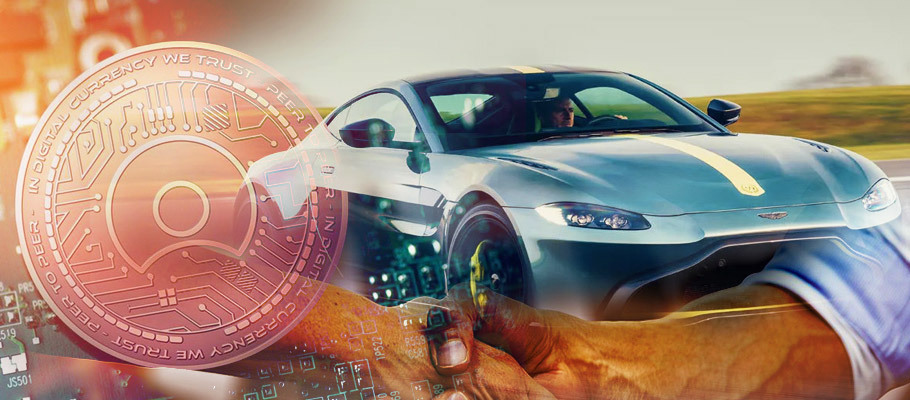
Published: February 3rd, 2020
Do you dream of owning an expensive supercar but the hefty price tag means it's forever out of reach? Blockchain may have an answer.
Investment platform CurioInvest and digital assets exchange MERJ have joined forces to offer serious car collectors tokens backed by rare and luxury cars. The partners say tokenizing luxury four-wheeled assets as an investment could make them more accessible to a wider pool of people.
The new ‘CT1’ tokens will be listed on MERJ, a regulated exchange based in the crypto-friendly Seychelles. MERJ is licensed by the Seychelles’ Financial Services Authority. An affiliate member of the World Federation of Exchanges, MERJ is looking to institutional investors and high-net-worth individuals in regions like China that have complex restrictions on auto imports. Last year, MERJ launched a tokenized Initial Public Offering (IPO -- a first for a national stock exchange -- listing its own equity via the Ethereum blockchain.
Since then exchange executives have said a pipeline of new tokens is set to be listed. Backed by rare and expensive cars, CT1 looks to be next in line.
Together with Lichtenstein-based CurioInvest, the two companies plan to tokenize 500 collectable cars worth over $200 million onto the exchange, then offer fractionalised ownership via the CT1 token. MERJ says any vehicle ‘whose value increases by more than 20% will be resold so that investors can share in the profits.’
A Ferrari F12tdf, worth about $1.1 million, will be among the first to be tokenized. The Ferrari will be stored and maintained in a vault in Stuttgart.
As a brand, Ferraris account for more than 60% of automobiles sold for more than $5 million.
The CT1 token is part of an upsurge in blockchain offerings emerging since the rebound in cryptocurrency prices. The idea – letting companies bypass the venture-capital process and letting people purchase bits of an asset – first took hold during the crypto craze of 2017. Back then, hundreds of companies jumped on the blockchain bandwagon, raising billions along the way.
Regulators popped the market bubble in 2018 with a crackdown in initial coin offerings (ICOs), citing fraud and questionable practices after seeing investor losses in the millions. New offerings slowed sharply in 2019 – but not before hitting $5.8 billion in mid-2018.
With their luxury-backed token, the two partners are wagering that the value of rare, collectable assets will continue to appreciate, creating a ‘virtual garage of their dreams’ for investors.
Operating to IOSCO standards, MERJ says it's creating a bridge between digital and non-digital securities by delivering investor car enthusiasts a licensed and fully-integrated trading platform, offering the confidence of traditional markets such as ISIN codes.
“Now an auto enthusiast in Uganda can invest in a rare car that’s kept in a vault in Stuttgart, tokenized by a Liechtenstein-based company, and recognised by a safe regulatory environment,” said MERJ’s head of digital strategy.
The idea isn’t completely new.
What makes the CurioInvest-MERJ venture stand from novelty crypto-innovations is the fact that it’s properly regulated, the companies say, and the fact that luxury goods have always been seen as a safe bet.
As an asset class, rare and luxury cars are consistently among the top performers, beating out established asset classes and other high-value collectables like jewellery, fine wines, and watches.
UK property consultancy Knight Frank says vintage cars delivered returns of more than 330% between 2017 and 2020, outpacing traditional investments like stocks and bonds.
“Fine art and collectable cars have historically been seen as haven investments,” said Fernando Verboonen, CurioInvest’s founder.
He also said the company doesn’t at CT1 as a stablecoin, seeing it instead as a security token, given that its being launched with a prospectus approved by the Financial Market Authority, and ticks many compliance boxes by including an International Securities Identification Number.
CT1 tokens are expected to be investable starting at one US dollar.
Interested investors may be disappointed to learn that token ownership won’t entitle them to sit behind the wheel of their investments. Fractionalised luxury car ownership is strictly an investment format.
As the underlying asset is an automobile, investors might also be expected to question how depreciation could affect CT1’s value. CurioInvest points to the standard caveat that all forms of investment are subject to risk, and reminds potential investors that as ‘real’ assets, cars can be affected by material risks like the possibility of damage.